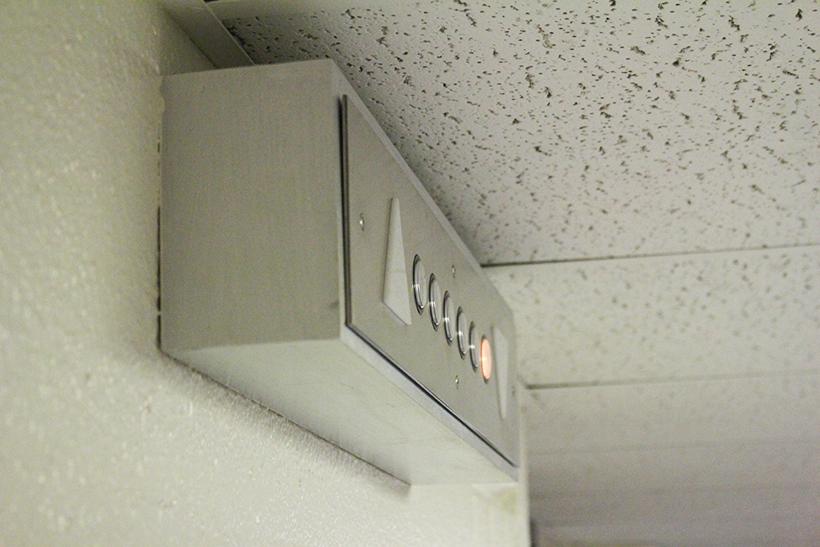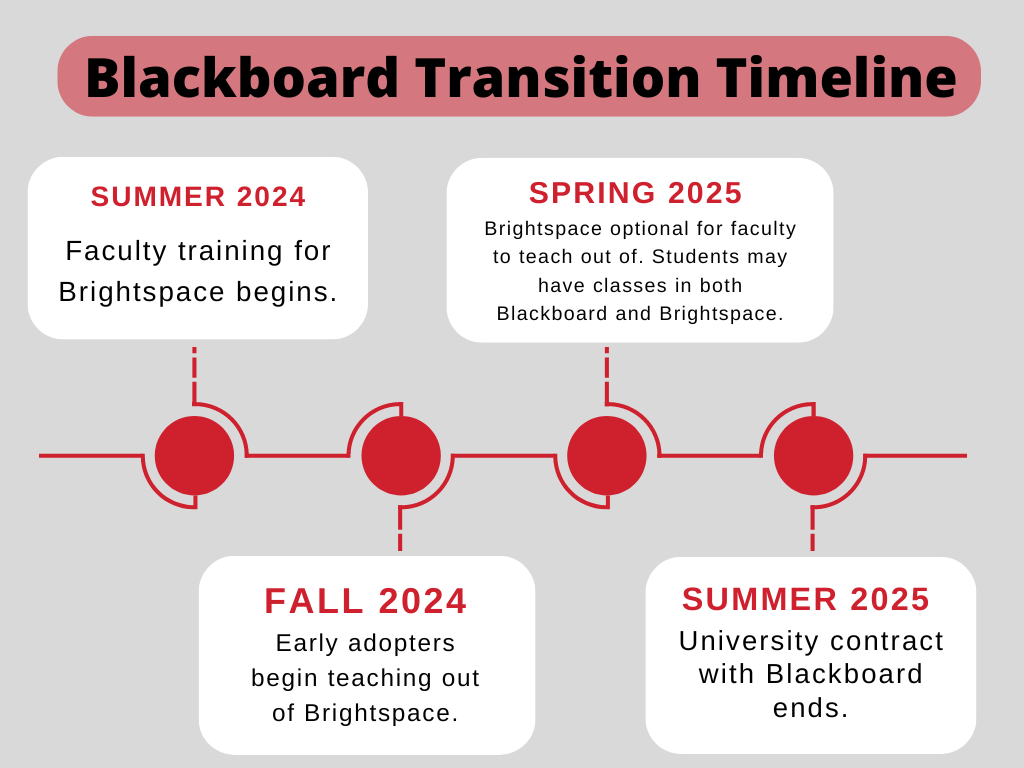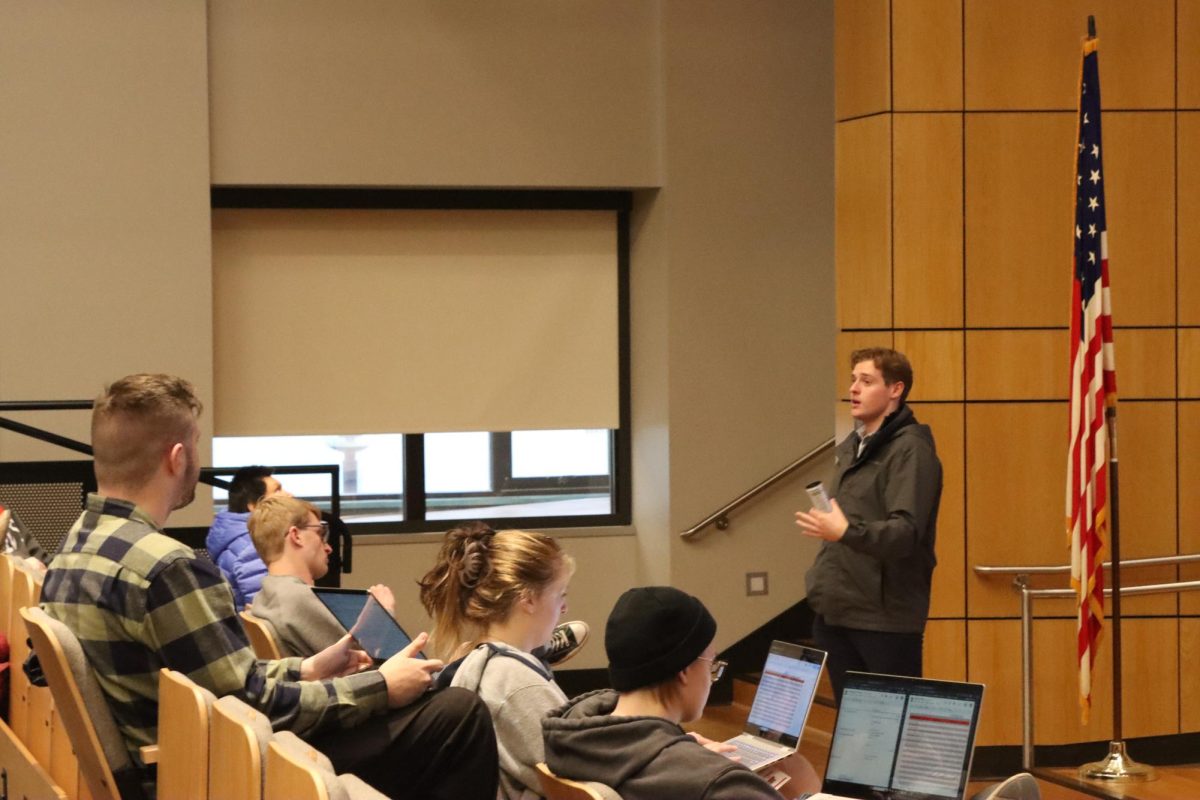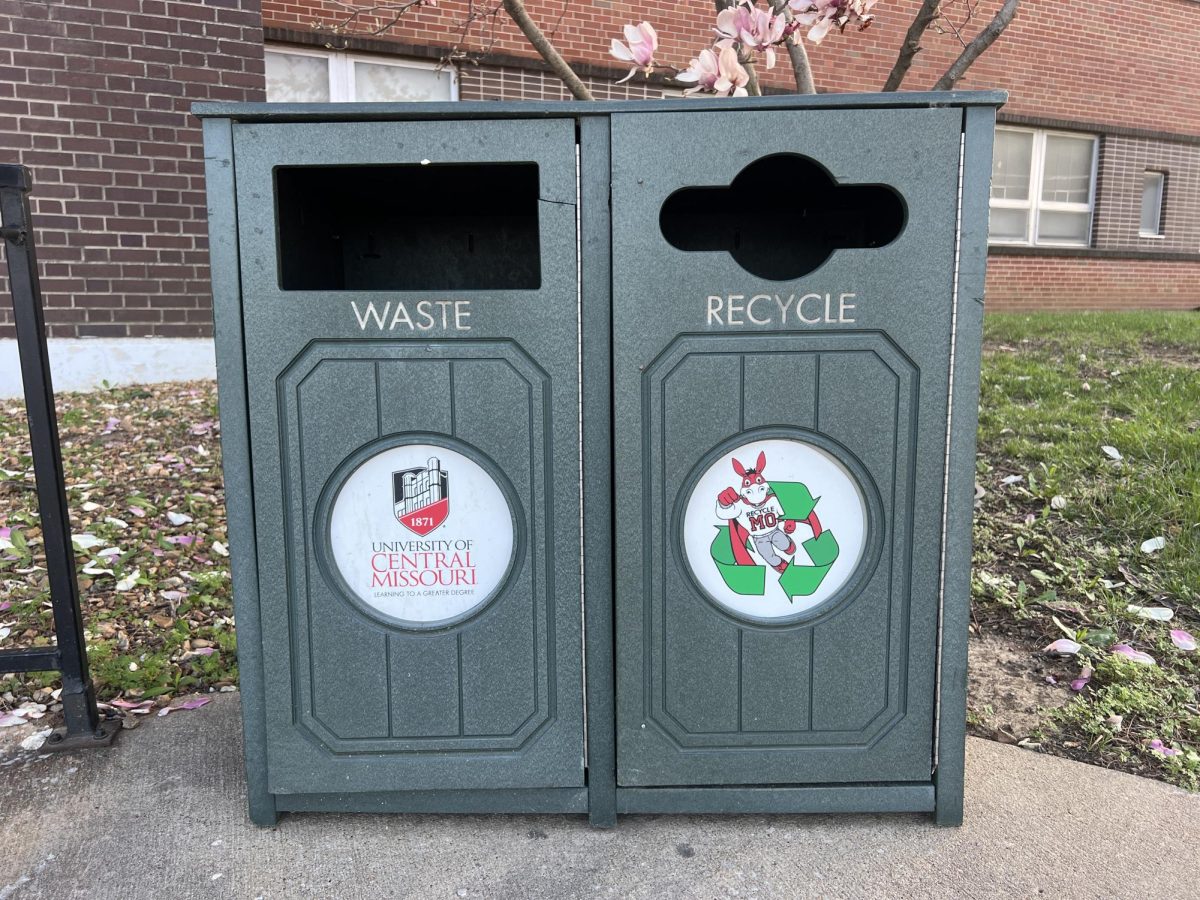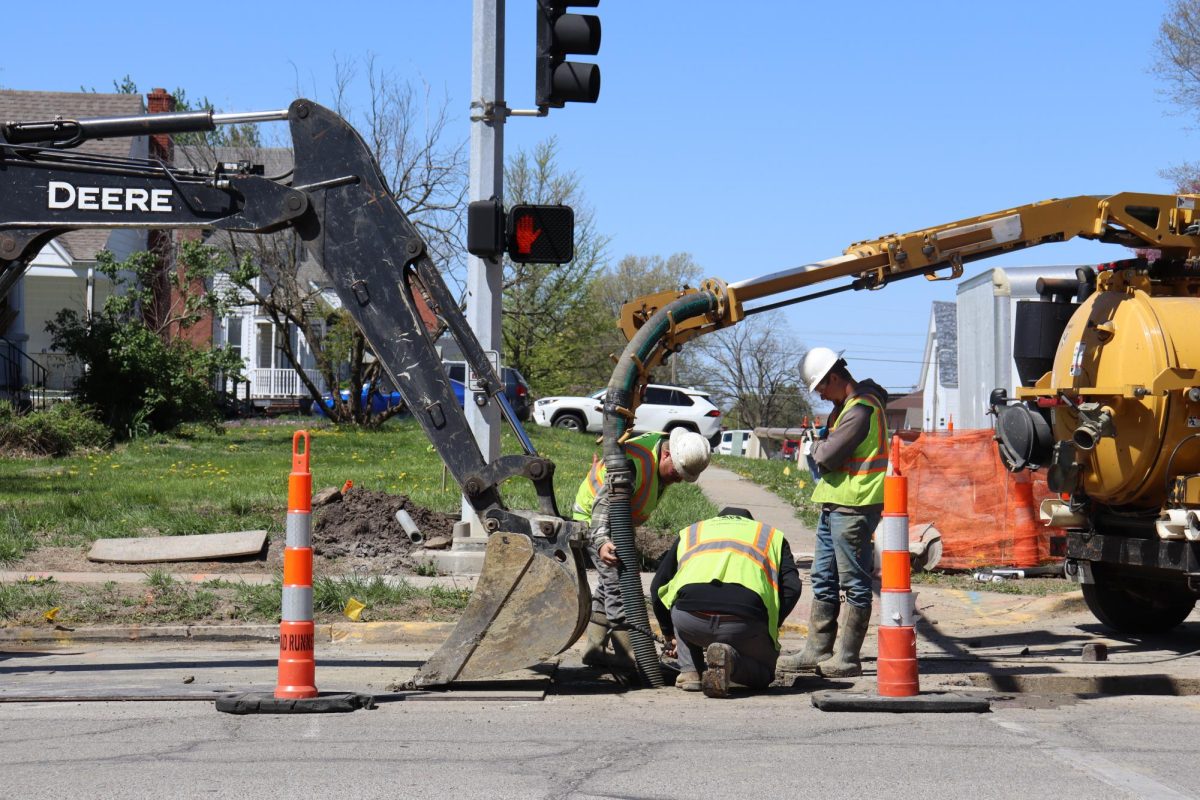Click the box at the top right corner for full screen and to interact with this map of campus elevators. Once full screen, there is a legend along the left side that describes the color coding scheme for the pins on the map. The pins are color coded to the number of 2017-18 work orders and 2014-18 inspection violations. Click on a pin to view pictures and information about the elevator, inspection violations and number of 2017-18 work orders.
Need a lift?
If so, you’d likely turn to one of the 31 passenger elevators on campus.
That is, if the one nearest you is working. Elevator outages have become a part of the university culture, marked by frequent emails and “OUT OF ORDER” signs.
The average age of elevators on campus is approximately 27 years old. The oldest passenger elevator, installed in the Lovinger Building, dates back to 1964.
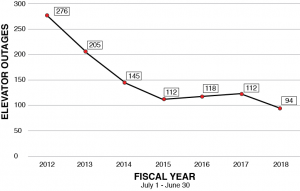
While the average age of elevators is 27 years old, the number of outages has decreased. According to a chart provided by Facilities, Planning and Operations, elevator outages have fallen from 276 for fiscal year 2012 to 94 for fiscal year 2018.
Gene Russell, manager of facilities management, said a work order is made and inspected by in-house personnel once an outage is reported. If the inspection deems the elevator needs repair, FPO contacts Schindler Elevator, the contracted elevator repair company responsible for repairing and maintaining the elevators. State law mandates that all elevators be repaired by a certified elevator company, such as Schindler.
Russell said elevators are often repaired within 24 hours.
Tim Castilaw, associate vice president of capital planning and facilities management, said FPO spent nearly $146,000 in fiscal year 2018 repairing and upgrading elevators.
Elevators are subject to three regular inspections. The Missouri Division of Fire Safety — Elevator Safety Unit performs required annual inspections on the elevators. Castilaw said additional inspections are performed for preventive maintenance purposes, while a third round of inspections is performed for insurance purposes. According to a sample elevator inspection sheet, nearly every aspect of the elevator is inspected, from inside of the car to the driving machinery.
In addition to the decrease in number of outages, the number of violations decreased from 22 in 2017 to 18 in 2018.
In 2018, elevators in the James C. Kirkpatrick Library, The Crossing – South at Holden and the W.C. Morris Building, were temporarily removed from service.
Castilaw said the right lobby elevator in The Crossing was red-tagged after the inspector discovered a missing part from the original installation in 2015. He said the missing part did not affect safety. The elevators installed in The Crossing have also received multiple inspection violations for the lack of state labels posted in the machine room. He said the elevator was returned to service within two days.
Russell said the east elevator in the library was red-tagged due to a malfunctioning hydraulic valve and the Morris elevator was red-tagged due to the drive cables being stretched beyond specification. Both elevators were returned to service within 24 hours.
Castilaw said the elevators are reliable.
“People don’t notice when things are operating correctly,” Castilaw said. “It becomes invisible. But what does get their attention is when something’s not working or something broke, something’s dirty or something’s not detailed on the lawn.”
Outage emails have become a part of the university culture, inspiring social media posts and memes in response to their frequency. A Twitter account was even created in honor of the UCM elevators.
However, for the 44 students registered with Office of Accessibility Services who rely on the elevators to get to and from classes, those emails are important.
“We do, obviously, have some students that the only way they can get to their classrooms on higher levels is by use of the elevator,” said Danelle Cord, associate general counsel of accessibility services.
Cord said OAS assists students during short-term outages by providing them with an excused absence and working with their professor to get coursework. For long-term outages, Cord said the entire class may be moved to a lower level.
Since elevators are complex machines, they do eventually fail.
Russell said all campus elevators contain phones for calling Public Safety in the event of a stall.
“When that (a stall) happens, Public Safety officers are dispatched and we are dispatched to go to the elevator to let the students off,” Russell said.
According to FPO records, 10 people became stuck in a stalled elevator between July 2017 and November 2018. Castilaw said it takes Public Safety five to ten minutes to respond to a stalled elevator.
Castilaw said that FPO’s main method of preventing stalled elevators is to be proactive.
“By being proactive and planning and doing as much scheduled maintenance and preventive maintenance on the equipment, we want to extend the life of these assets so we get the maximum value out of all of the assets of the university,” he said.
Categories:
Elevator outages drop despite aging equipment
Written by Garrett Fuller
January 30, 2019
Photo by Garrett Fuller
Despite the average age of campus elevators being 27 years old, outages and inspection violations have decreased in recent years. (Photo by Garrett Fuller, senior writer.)
0
Tags:
More to Discover


